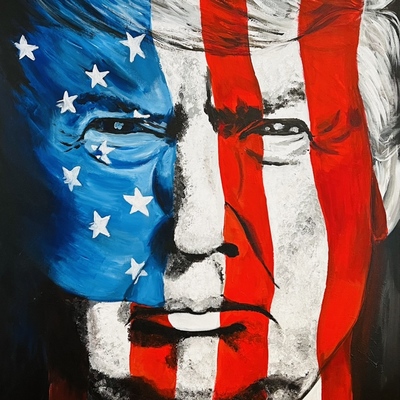Stay informed on the latest Truth Social posts from Donald Trump (@realDonaldTrump) without the doomscrolling. Consider it a public service for your mental health. (Why?)
- The country's survival and success depend on its ability to use tariffs against tariffs.
- Without the capacity to implement tariffs against tariffs, the country would face insurmountable challenges.
- Legal professionals are fighting hard to safeguard the country.
- A significant national case for America is currently underway.
The strong emphasis on 'TARRIFS AGAINST TARIFFS' signals a potential for aggressive protectionist trade policies. This rhetoric can significantly influence S&P 500 companies, particularly those reliant on global supply chains and international trade, by creating uncertainty around future trade agreements, import/export costs, and corporate profitability, leading to moderate market impact.
The post focuses on economic policy, specifically tariffs, as crucial for national protection. While tariffs are tools in international relations, the narrative does not contain direct threats of military action or ultimatums that would escalate geopolitical conflict, thus posing a very low direct geopolitical risk.
- Commodities: Gold (XAU) may rise as a safe-haven asset amidst trade uncertainty. Oil (WTI) could face downward pressure due to potential global economic slowdown from trade disputes. Industrial metals like Copper may see demand impacts. Short-Term Watchlist: XAU/USD price action, trade-related headlines. Medium-Term Focus: Global industrial demand shifts, inflation implications from tariffs.
- Currencies (Forex): The US Dollar Index (DXY) could strengthen if capital flows into the US increase due to trade tensions, or weaken if trade wars are perceived to harm the US economy. Major pairs like USDJPY, EURUSD, and USDCNH would react to trade sentiment and economic expectations. Short-Term Watchlist: Trade rhetoric, central bank comments on economic outlook. Medium-Term Focus: Global trade balance changes, central bank policy divergence.
- Global Equities: S&P 500, Nasdaq, STOXX 600, Nikkei 225, and Hang Seng could experience volatility. Companies with significant international exposure, particularly in manufacturing and technology, may face challenges from increased tariffs or retaliatory measures, impacting earnings outlooks. Short-Term Watchlist: Futures open, VIX levels, sector performance in trade-sensitive industries. Medium-Term Focus: Corporate earnings revisions, macro data (PMI), global capital flow shifts.
- Fixed Income (Bonds): US 10Y and 2Y yields could fall if a flight to safety occurs due to trade uncertainty, increasing demand for Treasury bonds. Conversely, if tariffs are seen as inflationary, yields could rise. Credit spreads may widen if corporate default risk perception increases. Short-Term Watchlist: UST 10Y yield levels, bond market reaction to trade headlines. Medium-Term Focus: Inflation expectations, Fed policy response to trade-induced economic changes.
- Volatility / Derivatives: The VIX is likely to spike in response to heightened market uncertainty stemming from potential trade policy shifts and their economic consequences. Options positioning may indicate increased demand for hedging. Short-Term Watchlist: VIX levels and term structure, options volume. Medium-Term Focus: Volatility regime shifts, systemic tail risk from trade conflicts.
- Crypto / Digital Assets: Bitcoin (BTC) could potentially function as a digital safe haven if traditional markets become unstable due to trade wars, or it may track risk assets like tech stocks if liquidity contracts. Short-Term Watchlist: BTC/USD price action, correlation with risk assets. Medium-Term Focus: Regulatory developments, macro liquidity backdrop, broader adoption trends.
- Cross-Asset Correlations and Systemic Risk: Increased trade tensions could lead to breakdowns in historical asset correlations, such as equities and bonds selling off simultaneously if stagflationary fears arise. Signs of liquidity stress could emerge if global trade finance is disrupted. Short-Term Watchlist: MOVE index, credit spreads, gold/USD co-movement. Medium-Term Focus: Central bank interventions, global financial system stability, market plumbing vulnerabilities.
- Retail Sentiment / Market Psychology: The strong nationalistic and economic survival rhetoric could influence retail investor sentiment, potentially leading to increased interest in domestic-focused sectors or companies perceived to benefit from protectionist policies. However, overall market uncertainty might temper broad speculative activity. Short-Term Watchlist: Social media discussions on trade policy, retail trading volumes in related sectors. Medium-Term Focus: Influence of political discourse on retail investor behavior, potential for sentiment-driven market shifts.

